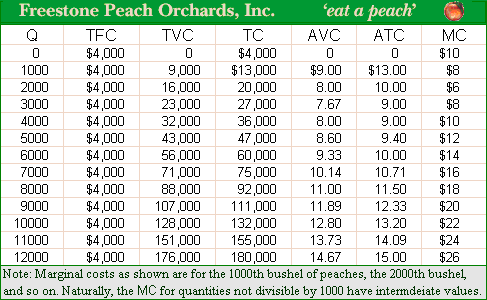When the wholesale price P = $7 per bushel of peaches, it purely competitive peach orchard maximizes profit via producing ___ bushels of peaches at a total economic of profit or loss totaling $___. (i) zero; loss; -$4,000. (ii) 2000; loss; -$3,000. (iii) 3000i; profit; $3,000. (iv) 4000; profit; $9,000. (v) 4000; profit; $4,000.

How can I solve my Economics problem? Please suggest me the correct answer.